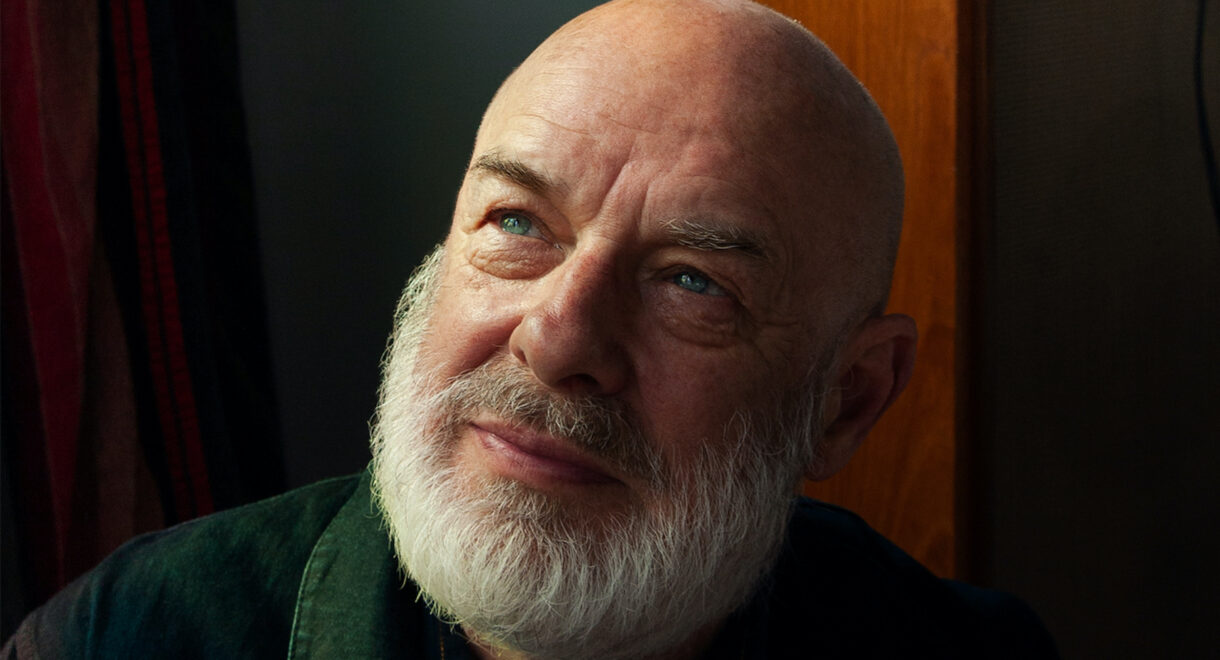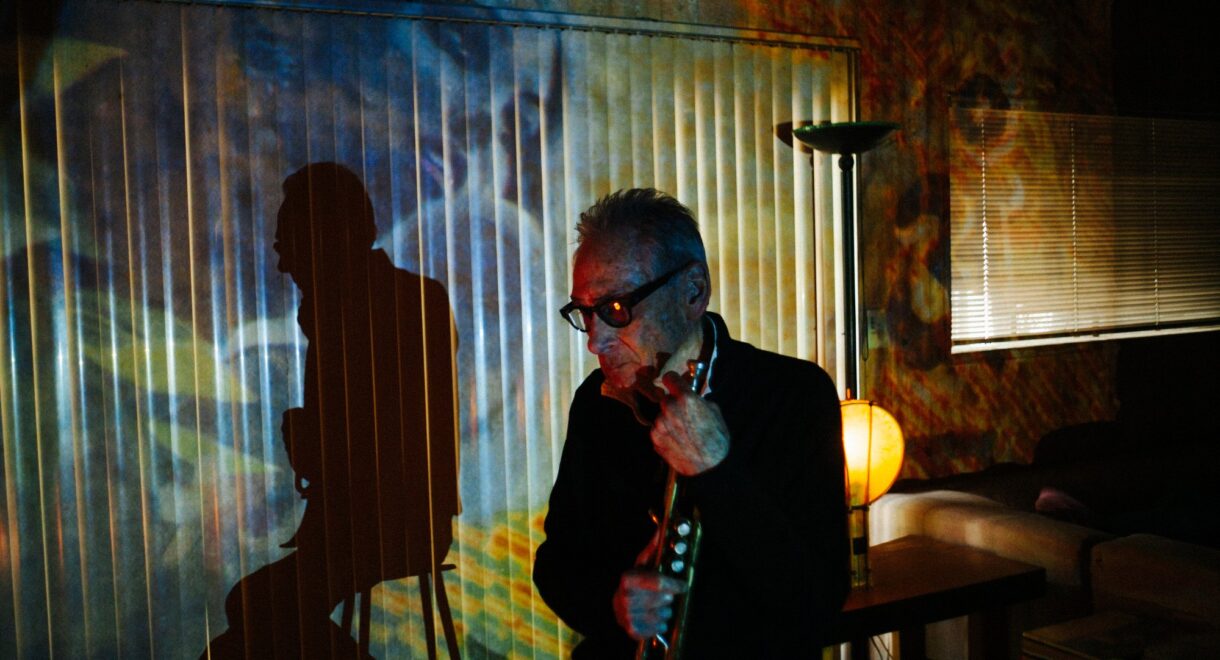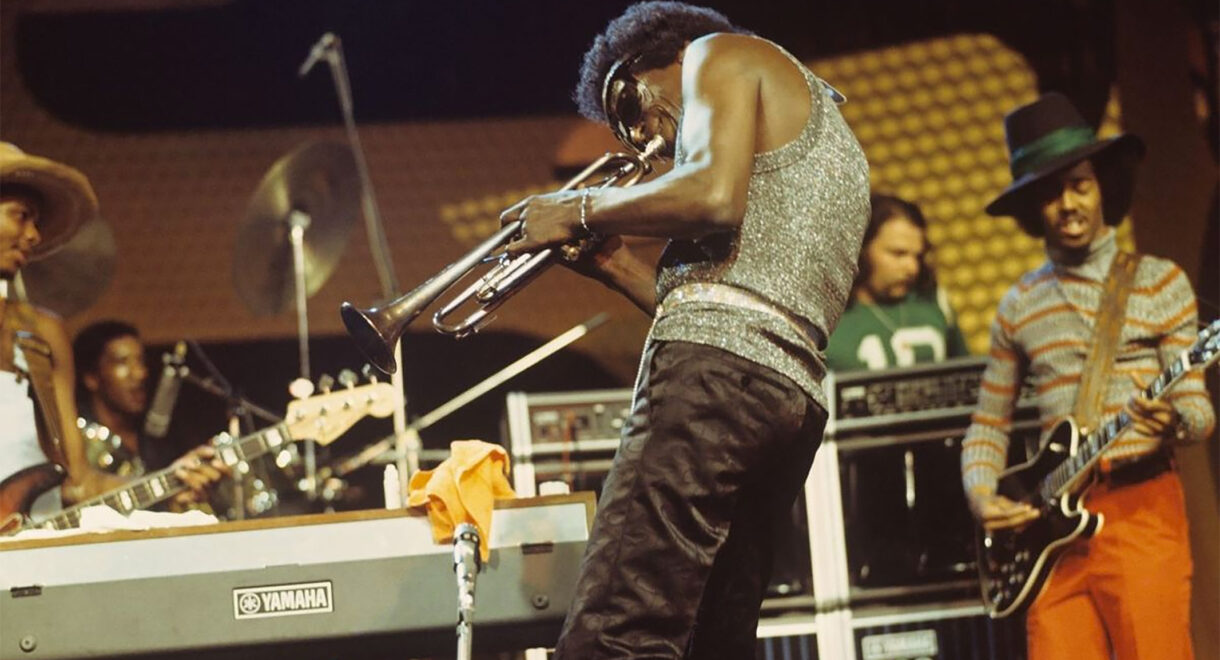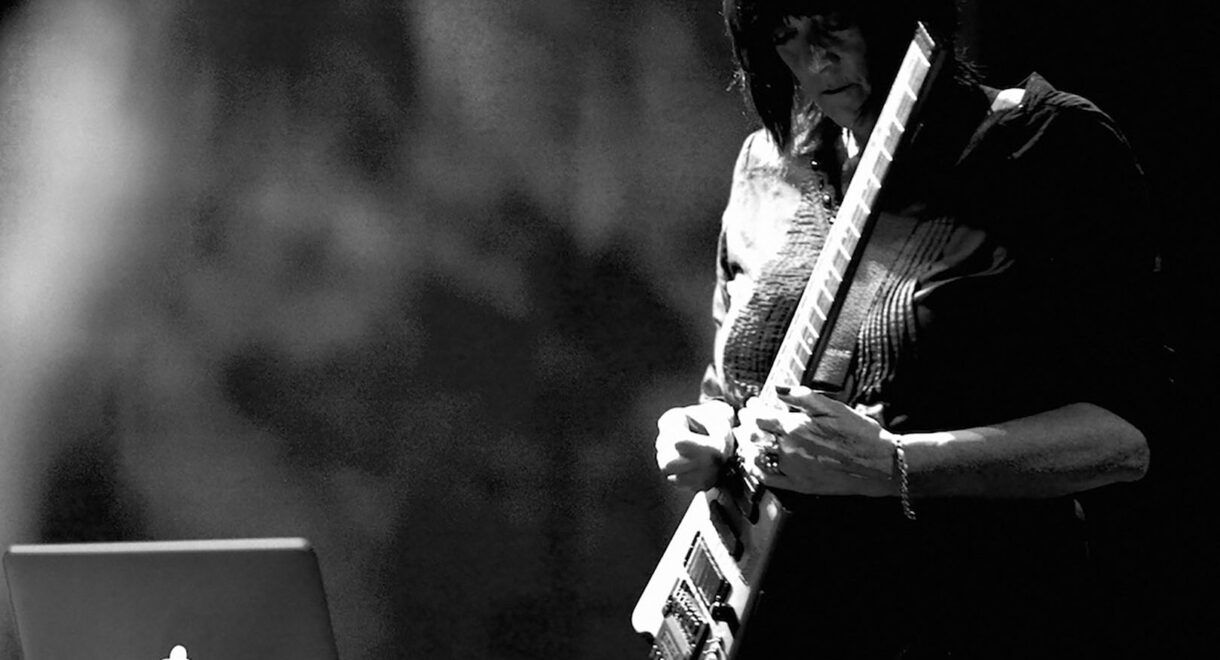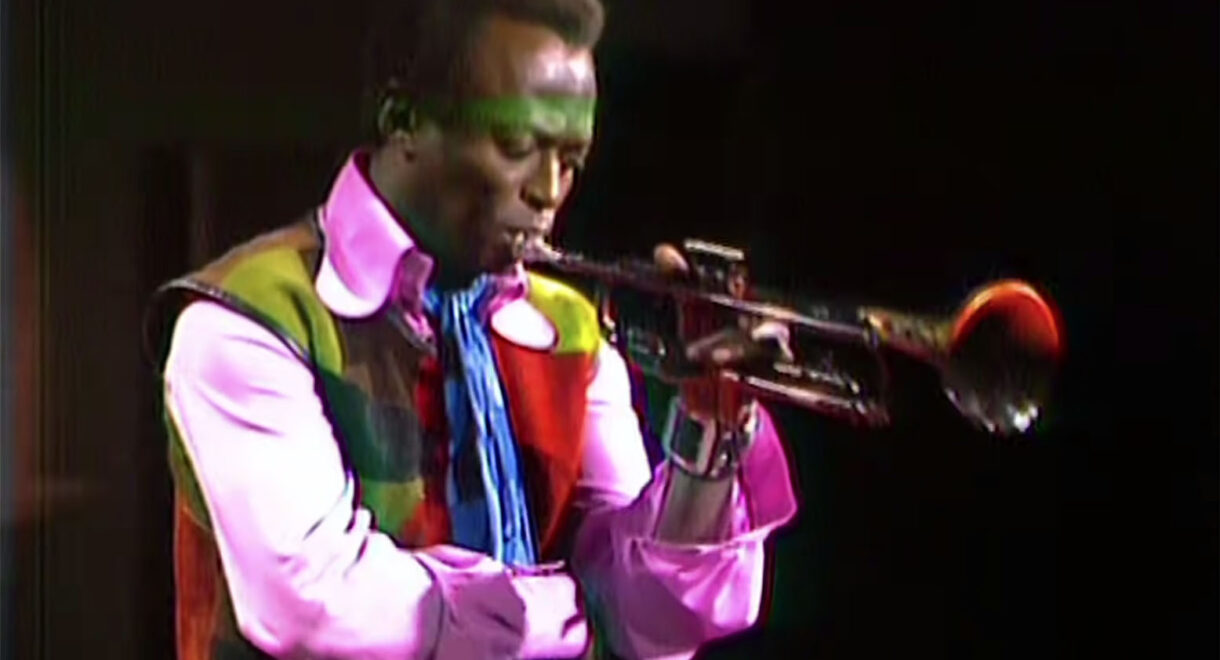Join us at ISC NYC for a Brian Eno Dedicated Listening Session today. If history has taught us anything, it’s that when Brian Eno starts talking about art, […]
Music for Your Eyes: The Visual Art of David Bowie, Miles Davis, Joni Mitchell, and more…

Paintings, installations, light works from ten musicians who ventured into the visual arts.
Thanks to recording technology, music has now become the most consumed art form in the world. It maintains an effortless ubiquity that flows invisibly wherever it’s played, whether it be actively live or passively in the background at home. But beyond the experience of clamoring on stage, many beloved musicians have used visual art as a way to exercise their creative visions, though rarely does this foray into visuality eclipse their sonic work.
This list of 10 musicians who’ve made their work public might surprise you, and some, like David Byrne, only started making their work public during the pandemic. If you’re already a fan of their music, you might find yourself strangely connected to their work. Taking this perspective lends itself to the idea that the multitude of creative expressions speaks to one essential human truth: Making sense of the oppressiveness of logic through poetic exploration.
David Bowie
Bowie studied art, music and design in school and started to paint when he began to experiment with hallucinatory substances in the 70s. He and Iggy Pop fled to Berlin in 1976 in the wake of what they saw as the over commodification of music in Los Angeles, and it was in Berlin that Bowie fell in love with German Expressionism by artists such as Frank Auerbach and Wassily Kandinsky. Bowie’s work is similarly austere, eerie and dark. It wasn’t until 1995 that he had his first gallery exhibition. Check out Art Sheep’s 25 Paintings by David Bowie.
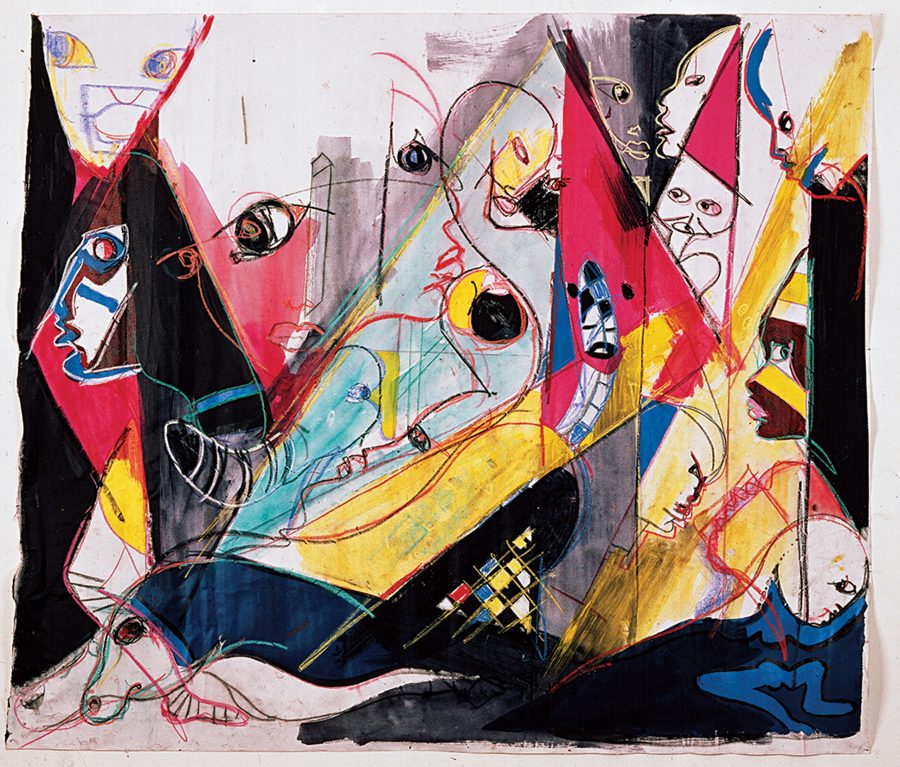
Miles Davis
Miles Davis’ serious and depressed demeanor shifted when he was working creatively, so when the “Jazz Prince of Darkness” wasn’t making music he would paint to keep his mind on something positive. When he found painting he became obsessed with the medium, and Scott Gutterman’s book “Mile’s Davis: The Collected Artwork” released in 2013 shows a healthy retrospective of his visual art. In the work shared above, you can see a style reminiscent of Kandinsky, Mondrian, Basquiat and Picasso; “Heads II” in particular reads very much like Davis’ take on “Guernica.” View more of Miles paintings here: Link
Lee “Scratch” Perry
Eighty-five-year-old Lee “Scratch” Perry is a uniquely prolific artist and may be the least surprising on this list, even if you didn’t know he made visual art. Perry usually regales himself with outrageous handmade clothing and jewelry, so he himself is a walking art piece. Pictures and video that survived from his legendary Black Ark Studios in Jamaica are equally stunning, and in just the short 6 years it was in existence from ‘73-’79 it became a 24-hour factory of historically impactful music. It burned in a fire started by Perry himself, but artifacts spared by the flames were used in his 2019 mixed media show pictured above at the Swiss Institute.

Joni Mitchell
Joni Mitchell has often said that she sees visual art as her true calling but it was her powerful writing and enchanting voice that entranced millions. She experimented with painting throughout her music career, and went as far as mimicking the impressionist self portrait of Vincent Van Gogh. What many might not know is that out of her 19 studio albums, 12 feature artwork by Mitchell herself.
David Byrne
While Talking Heads co-founder David Bryne was self-isolating in Manhattan during the pandemic, he felt inspired to put the pen to the page. He debuted a series of fifty drawings and animations comedically named “dingbats” as an online gallery, hosted by Pace Gallery in October 2020. A playful humor permeates his work, much like his music and live performances. The proceeds went to a journalism project he’s involved with called the We Are Not Divided project. You can see the collection of of his art for the exhibition here: Link
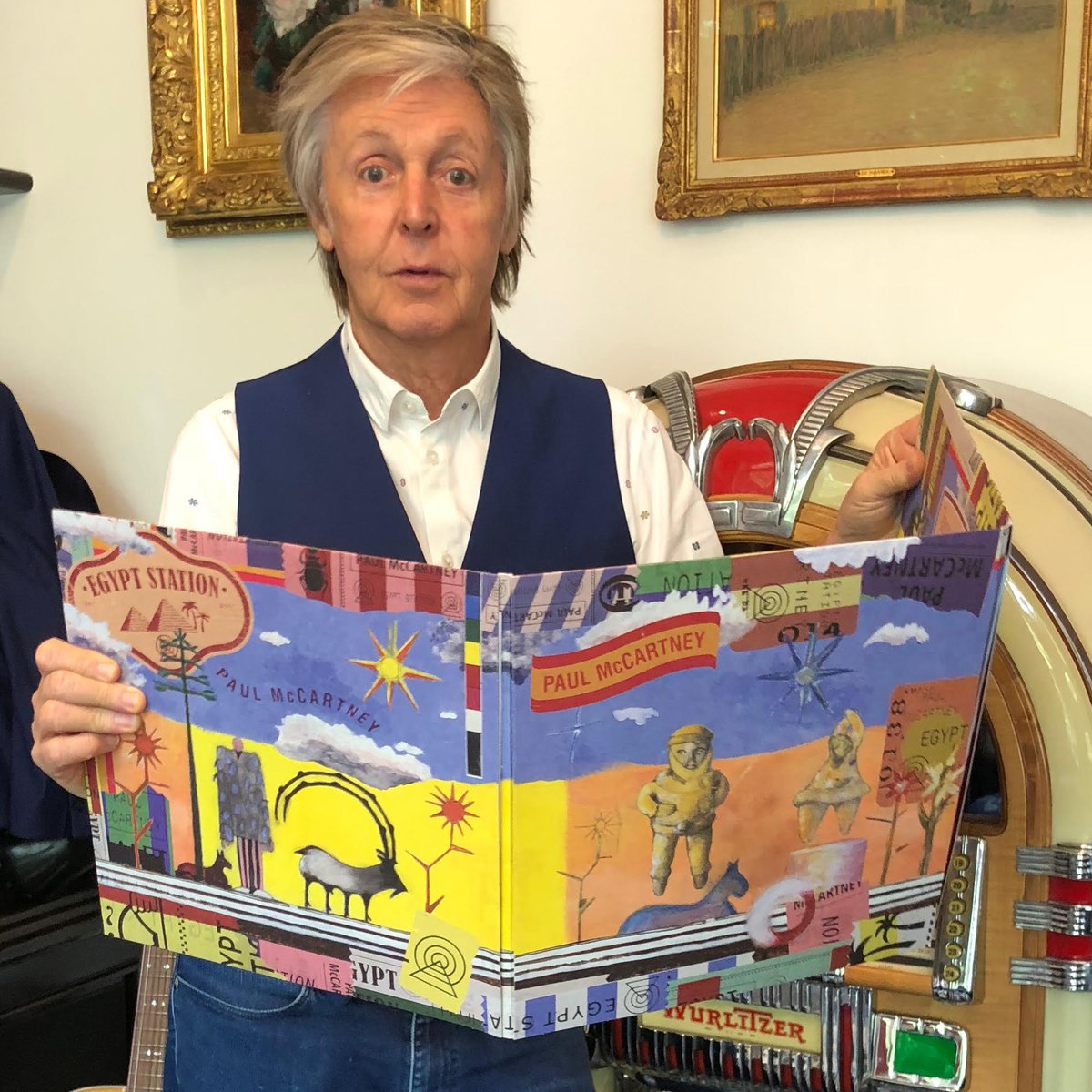
Paul McCartney
John Lennon may have been the most famous Beatle to venture into visual art, but Paul McCartney sought creative refuge there too. When McCartney was going through his divoirce with Heather Mills in 2006, it was leaked that he had an art collection worth $32 million, almost ten percent of his net worth. This is also a good time to be reminded that it was him who was responsible for conceiving the idea of Sgt Pepper’s Lonely Hearts Club Band, and at the risk of being cheeky, he does have the word “art” in his name.

Brian Eno
Brian Eno has long been entrenched in the art world himself but as he grows older he’s been devoting more time to developing the relationship between his visual art and music. Eno released a book on the matter called “Visual Music” in 2013 to deepen the dialogue even further. He famously coined the term “ambient” to describe the musical phenomenon marked by remarkable minimalism and expansive sonic environments, and Eno uses the same term to describe his place as an artist. He sees himself as the ambient source that emanates an array of creative works that are in constant conversation. He not only experiments with light projections, but also uses light as a case study for his paintings.
Herb Albert
Trumpeter and multi Grammy award winner Herb Alpert is best known for his time as the band leader of Tijuana Brass. They were prolific with their approachable compositions, and popular throughout the 60s and 70s. Alpert was always interested in art, but expanded into large form sculpture in his later years. His “Spirit Totems” have been shown in galleries and permanently installed across the US and tower up to 19 feet. What’s notable about Alpert’s approach is he wants those who engage with his art to touch and experience the tactile motion of the totems, and the organic forms invite that. Sound is still very much a part of the experience of his work, and he even created a compilation of ambient trumpet music called “Music for your Eyes” to fill the environment of this work.

Milford Graves
Milford Graves was pivotal in creating a foundation for progressive jazz through his work on Albert Ayler’s Love Cry in 1968 and as band leader Milford Graves Percussion Ensemble. He was known for pushing past the convention of the drummer being the musical timekeeper, and delivered thunderous performances that had as much personality as any other instrument on stage. He had an especially passionate curiosity that led him to explore the relationship between botany and universal truth, and even developed a martial art practice called Yara. The culmination of his experiments and personal culture that resulted from it was recently on display at the Institute of Contemporary Art University of Pennsylvania. The show was a retrospective of his work called “ Milford Graves: A Mind-Body Deal”. You can digitally view the show by following this link: Link
John Lurie
Saxophonist John Lurie co-founded the Lounge Lizards in 1978, a band known for their deconstructed take on jazz. Over time they matured into more sophisticated arrangements, but when Lurie contracted lyme disease in 2000 it made it difficult to play and he started to focus on his painting. His work has been shown around the world and aesthetically ranges from the whimsical to the horrifying. His HBO series “Painting with John” debuted in January. It’s similar in tone to “Fishing with John,” his cult-classic fishing show. His decidedly grumpy demeanor is juxtaposed with the idyllic Caribbean island he lives on, and he has an obvious joy in sharing his gruff “over it” mood.




